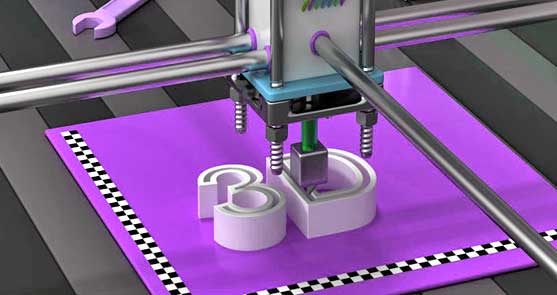Blog Detail


3D Printing - A Digital Manufacturing Technology
19-06-2018

What is 3D printing?
3D printing, also known as additive manufacturing, is a process by which three dimensional solid objects are created by depositing materials in layers based on a digital model. All 3D printing processes require software, hardware, and materials to work together.
3D printing allows companies to quickly produce working prototypes and home hobbyists to produce various bits and bobs for the home. While plastic remains the dominant printing material, additive manufacturing with materials including metal, cement, and even glass, enables the production of everything from tiny screws to engine components to entire houses and it's only just getting started.
How Does 3D Printing Work?
It all starts with the creation of a 3D model on your computer. This digital design is, for instance, a CAD (Computer-Aided Design) file. Either 3D modeling software or based on data generated with a 3D scanner is used to create a 3D model. With a 3D scanner, you’re able to create a digital copy of an object.
Common Methods of 3D Printing
Fused Filament Fabrication (FFF), Stereolithography (SLA), Selective Laser Sintering (SLS)
Applications of 3D Printing
Applications include rapid prototyping, rapid manufacturing, Automotive, Aviation, Aerospace, Construction, Architecture, Product Design, Medical, Food, Fashion and movie props.
Other examples of 3D printing would include reconstructing fossils in paleontology, replicating ancient artifacts in archaeology, reconstructing bones and body parts in forensic pathology and reconstructing heavily damaged evidence acquired from crime scene investigations.
3D Printing Market Trends
The 3D printing industry has grown rapidly from 2013 to 2018. The annual revenues of 3D printing market are estimated to reach 12 billion by the end of 2018. As it expands gradually, 3D printing technology is destined to transform almost every major industry and change the way we live, work, and play in the future.
Future Prospects of 3D Printing
Some additive manufacturing advocates have predicted that 3D printing will change the nature of commerce. This will help the end-users to do their own manufacturing rather than engage in trade to buy products from other people and corporations.
3D printers are capable of producing in color and multiple materials which already exist and will continue to improve to a point where functional (electronic) products will be able to be output. It provides the best effects on energy use, reduction of wastes, customization, and availability of the product, medicine, art, construction, and sciences, which will change the manufacturing world as we know it.